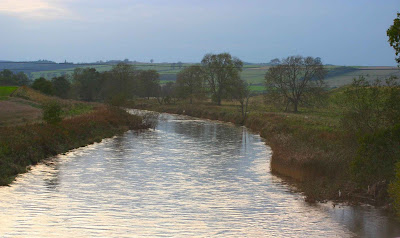This time of year we all know is breathtaking for the riot of colour, of trees changing into the rich tones of Autumn. But I've been noticing more the green, bright, almost glowing green of beautiful mosses - close up just like little forests and landscapes in themselves. Dappled sunlight catching the mounds and bumps of cushion soft green, dew quenched hillocks of feathery frond beauty made brilliant.
Mosses are primarily found growing in lightly shaded areas and thrive in moist, average soil. They grow slowly and live a long time. Like ferns, mosses grow from spores. The spores develop green threadlike branches, rather than roots, which push into a surface and then develop tiny flat leaves. Thousands of these plants bunch together to make a single patch of moss. Mosses obtain all their nutrients from the air, rather than soil, which is why they so love growing on stone.
So, I've been making some little moss gardens - there are many hundreds of types of moss to choose from. Apart from vibrant green there are yellow, brown and even white varieties.
Of course the Japanese have for centuries been growing moss gardens and from a religous perspective, moss gardens have been thought to elicit a calm, contemplative state of mind.
Actually they are quite easy to grow - you can transplant moss mat into a firmed soil bed, moisten both soil and moss, pack the soil tightly round and beneath it. Keep watering well for the first three weeks at least. Once the moss garden is thriving it will generally only require occasional misting with water or if particularly dry. They can be kept indoors too.
Once established you can propogate moss by taking a clump and crumbling into a blender with two cups of buttermilk and two of water. Blend on low speed until completely mixed. This can then be spread over any surface where you would like your moss to grow - horizontal and vertical surfaces become clothed in a velvety mass.
I've made a few stone plant pots which are now filled with moss, which seems very happy in this environment and they make a beautiful little garden, inside or out, and remain green and bright year round. I'm looking out for small red peat moss and white toothed peat moss, small flat, lanky, and bent leaf moss to add to the mix.





































